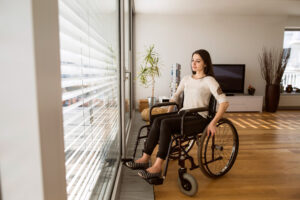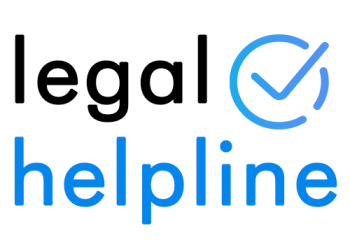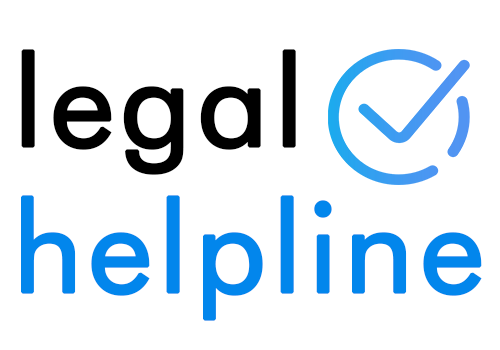Paralysis is a life-altering condition that can lead to a total loss of movement and sensation in affected parts of a person’s body. Its far-reaching impact can have significant ramifications for a person’s confidence, sense of independence, and financial wellbeing. If you or a loved one has been paralysed because of someone else, there may be grounds to claim compensation. Paralysis injury claims offer people a meaningful opportunity to support their needs and potentially ease some of the financial strain they may be experiencing.
This guide will go through the entire process of starting a claim, beginning with the eligibility criteria for seeking compensation. You will find out whether you can claim on a loved one’s behalf and discover what factors are considered when calculating compensation. Our guide will also take a look at some of the reasons for why paralysis claims happen, what evidence may be needed, and whether there are any deadlines that need to be met.
Lastly, we reveal how you can make a claim through our panel of No Win No Fee solicitors. In particular, you’ll read about the benefits of No Win No Fee agreements and how they can protect you from mounting soliciting fees.
To find out if you can start a paralysis injury claim today, please get in touch with our helpful advisors by:
- Visiting our ‘contact us’ page
- Calling them on 0333 000 0729
- Submitting an online enquiry

Jump To A Section
- Who Is Eligible To Make Paralysis Injury Claims?
- How Much Paralysis Injury Claim Compensation Could I Get?
- How Can I Make A Paralysis Injury Claim?
- What Can Cause Paralysis Injuries?
- What Are The 4 Types Of Paralysis?
- The Most Common Symptoms Of Paralysis
- Free Advice From Legal Helpline
- More Information
Who Is Eligible To Make Paralysis Injury Claims?
Anyone who has suffered paralysis in an accident that was not their fault may be eligible to start a paralysis injury claim. However, they must meet the following criteria:
- A third party must have owed them a duty of care
- The third party must have breached this duty
- This must have resulted in them suffering from paralysis
We are owed a duty of care by third parties on the road, in public spaces, and at work. If someone else fails to comply with their duty of care through a negligent act or omission, they would be in breach of their duty of care. As such, if they were responsible for an accident that caused you to sustain paralysis, you may be eligible to claim compensation.
Can I Claim For A Paralysed Loved One?
If a third party was responsible for your loved one’s paralysis, you may be eligible to start a claim on their behalf if they are unable to do so themselves. In personal injury claims, children and mentally incapacitated individuals cannot pursue compensation on their own.
Under such circumstances, you would assume the role of a litigation friend. Anyone over 18 may take this role on, but it is most often filled by a loved one or solicitor. If you become a litigation friend, you would be expected to act in your loved one’s best interests and perform various duties on their behalf.
You can contact our helpful advisors anytime to find out if you are eligible to start a paralysis injury claim for yourself or a loved one.

How Much Paralysis Injury Claim Compensation Could I Get?
Compensation for successful paralysis injury claims varies, as there are many factors which can affect payouts. However, in the table below, you will see some suggestive compensation guidelines presented by a document called the Judicial College (JCG), excluding the top figure (which doesn’t come from the publication). Please also note that we have only added this table for guidance, and it is not a guarantee of compensation.
Injury Compensation Explanation
Multiple Severe Injuries and Significant Financial Losses Up to £1,000,000 plus For multiple severe injuries and financial losses, such as rehabilitative care.
Tetraplegia (Quadriplegia) £396,140 to £493,000 In the middle range of this bracket, a claimant has complete awareness of their disability and will not have any physical pain. They will retain sensory powers and speech, although there will be a need for assistance with bodily functions. The claimant will have a life expectancy of 25 plus years.
Paraplegia £267,340 to £346,890 Compensation in this bracket may be influenced by factors like pain (whether there is any and to what extent), level of independence, age, depression, life expectancy, and how sexual function has been affected.
Shorter Durations of Paralysis £60,210 For this bracket, compensation may be lower if death occurs for an unrelated reason shortly after the accident.
Very Severe Brain Damage £344,150 to £493,000 Considers factors like life expectancy, what extent of insight there is (if any), the level of physical limitation, whether they need a gastrostomy for feeding, sensory impairment, their ability to communicate, affect on behaviour, and whether they have epilepsy (and to what degree it is controlled).
Moderately Severe Brain Damage £267,340 to £344,150 Determined by many of the factors listed above. In this bracket, the injured person has a very serious disability, leaving them substantially dependent on others and in need of professional care.
Severe Back Injuries (i) £111,150 to £196,450 This award is for spinal cord and nerve root damage, leading to severe pain, disability, incomplete paralysis and significant impairment to bowel, bladder, and sexual function.
Severe Back Injuries (ii) £90,510 to £107,910 Bracket covers back injuries causing damage to nerve roots that are associated with lost sensation and impairment to mobility, bowel, sex difficulties, and scarring that is considered unsightly.
Severe Neck Injuries (i) In the Region of £181,020 Neck injuries that cause incomplete paraplegia or permanent spastic quadriparesis. Cases can also include claimants who have little or zero neck movement and have headaches despite wearing a collar for 24 hours a day.
Severe Neck Injuries (ii) £80,240 to £159,770 Usually involving serious fractures or damage to cervical spine discs, causing disabilities that are of considerable severity but fall short of those listed above., such as a permanently damaged brachial plexus.
How Would My Compensation Be Calculated?
Your paralysis compensation injury compensation is calculated under 2 heads of claim, referred to as general damages and special damages.
With general damages, you are compensated for the physical and psychological injuries you suffered. Solicitors will sometimes use information from the JCG to help calculate the value of these damages, alongside your medical evidence. This document not only contains suggestive figures for a range of injuries but also provides notes on the factors that may be considered when determining compensation.
Under special damages, you are compensated for any financial losses relevant to your claim. These damages need proof like receipts or wage slips, and can include:
- Lost wages or work benefits, including holiday entitlement or bonuses
- Medical expenses, such as specialist rehabilitative care and medication
- Childcare if you need extra support due to your injuries
- Travel costs if you have to pay to get to and from appointments
- Special equipment, ranging from wheelchairs to electric scooters
- Home and vehicle modifications to improve accessibility. These adaptations can include stairlifts, rails, and hoists
You may also be compensated for a loss of amenity. This term refers to the activities you once participated in but are now unable to do so due to your paralysis injury. For instance, you may no longer be able to play tennis or go to the gym.
If you have any questions regarding compensation and paralysis injury claims in general, please reach out to our helpful advisors.
How Can I Make A Paralysis Injury Claim?
The following sections provide some useful information on how you can start a paralysis injury claim, specifically for time limits, evidence, and No Win No Fee claims.
How Long Do I Have To Start A Claim?
You have 3 years to start a paralysis injury claim, usually dated to when the incident happened. This time limit applies to all personal injury claims per the Limitation Act 1980, but there are some exceptions where it is paused. Minors and those who lack sufficient mental capacity cannot start a claim by themselves, so time limits won’t apply unless conditions are met:
- If the claimant is a minor, the time limit will begin on their 18th birthday and end when they turn 21
- If the claimant lacks mental capacity, the 3-year window for claiming is indefinitely frozen but will commence if they make a recovery. The time limit will then run down from the date of their recovery
As touched on earlier in this article, another person can act as their litigation friend to help launch a claim during the pause on time limits.
Do I Need Evidence To Support My Claim?
For your paralysis injury claim to be successful, you must have as much evidence as you can to prove how the third party was responsible for your suffering.
Some examples of evidence that may support your claim include:
- Your medical reports showing your paralysis diagnosis and treatment
- Copies of prescriptions and medical scans, such as X-rays
- Photographs of the injuries you sustained and the place where the accident happened
- A copy of the accident report book, if your injuries were recorded in one
- Dashcam or CCTV footage of your accident
- A copy of the police report, if they were called to the scene
- The contact details of anyone who witnessed your accident
Proving third-party liability is one of the most important stages of the claims process, and you must obtain evidence to do this successfully. If you are having difficulty with this, please don’t worry. By working with a solicitor from our panel, you’ll get any help needed with collecting proof.
The Benefits Of Using A No Win No Fee Solicitor
There are many benefits to starting a paralysis injury claim with a No Win No Fee solicitor, particularly when it comes to navigating things like evidence gathering and documentation. If you work with a solicitor from our panel, you will have access to a range of services built on years of education, training, and expertise. They are specialists in personal injury and paralysis claims and have helped many clients win the compensation they were entitled to.
At Legal Helpline, we recognise that you may have concerns about the financial impact of hiring a solicitor. That’s why our panel of solicitors offer their services on a No Win No Fee basis through a Conditional Fee Agreement (CFA). By signing a CFA, you can avoid having to pay any upfront or ongoing solicitor fees while pursuing compensation.
If you win, a success fee will be taken by the solicitor working on your claim as a small, capped percentage of your compensation. Should your claim not be successful, you won’t face paying any fees for your solicitor’s work.
To learn more about how to start a paralysis injury claim and our panel of specialist solicitors, please get in contact with our advisors. They are here to help and can answer any questions you may have.

What Can Cause Paralysis Injuries?
There are many reasons why paralysis injuries happen. In the following sections, we provide some examples of how they can result in paralysis injury claims.
Road Traffic Accidents
Everyone must use the roads in a manner that is safe and responsible in order to prevent injury to one another (including themselves). To help meet this duty of care, everyone must adhere to the Road Traffic Act 1988 and the Highway Code.
- Example: You are travelling down a 1-way street on your motorcycle when the driver behind you attempts to overtake you. As a result, they knock you off your vehicle, leaving you partially paralysed.
Accidents At Work
All employers need to take reasonable steps to ensure the wellbeing and safety of their workers. This duty is set out by the Health and Safety at Work etc. Act 1974 and can include conducting risk assessments and providing training when necessary.
- Example: While working on a building site, your employer doesn’t inspect newly erected scaffolding to ensure it is safe for use. When it collapses soon after work is started, you end up falling from a height and are left paralysed.
Accidents In Public Places
Those in control of a public space have a responsibility to take practical steps to keep visitors reasonably safe, per the Occupiers’ Liability Act 1957. To comply with this act, occupiers can take steps like performing regular maintenance or marking out potential hazards with warning signs.
- Example: A council has known for some time that a wall in a popular playground is unstable, but puts up no warning signs and doesn’t restrict access to the area. Due to this failure, the wall collapses on you while you are playing with your children, causing serious crush injuries and permanent paralysis.
These are only a small selection of the many reasons why paralysis injury claims happen. You can discuss your specific circumstances with our team and find out whether you are eligible to make a claim.
What Are The 4 Types Of Paralysis?
There are 4 common types of paralysis that a person may experience. These include:
- Monoplegia: May be temporary or permanent. It affects the limbs, either an arm or a leg, and can be caused by cerebral palsy or trauma.
- Hemiplegia: Usually permanent, affecting one side of the body. It is typically caused by strokes and injuries to the brain or spinal cord.
- Paraplegia: Affects the lower limbs and leaves people unable to stand or walk independently. It is often caused by trauma to the brain or spinal cord.
- Tetraplegia (Quadriplegia): Permanently affects the whole body from below the neck and may be caused by traumatic injuries to the spinal cord in the neck. It is associated with the inability to move and loss of sensory function.
No matter what type of paralysis you have, you may be entitled to claim compensation if someone else is at fault for your suffering. There are no obligations when you get in touch, so please reach out to see if you can claim.
The Most Common Symptoms Of Paralysis
There is a range of symptoms associated with paralysis, ranging from the temporary to the permanent. Some of the more common symptoms affecting the face or body include:
- The inability to move parts of your body
- Weakness, stiffness, or tingling
- Pain or numbness
- Muscle spasms or twitches
Often, symptoms of paralysis will occur instantly when the accident occurs. However, in some cases, the symptoms may appear gradually over time. If you experience any symptoms of paralysis, the best thing to do is seek urgent medical attention.
You can contact our advisors anytime to discuss your case and see if you could make a claim for the paralysis symptoms you are experiencing.
Free Advice From Legal Helpline
You can get free advice regarding your paralysis injury claim anytime by contacting our helpful advisors. They are available to answer any questions you may have and help you get started on your claim.
You can reach out to our advisors by:
- Visiting our ‘contact us’ page
- Calling them on 0333 000 0729
- Submitting an online enquiry

More Information
You can read more about paralysis or personal injury claims by reading the informative guides that are linked below.
- Learn more about how the personal injury claims process works
- Find out about claiming for a loss of earnings
- Discover how to win a personal injury claim
References:
- Find your nearest NHS urgent care facility
- Read about occupational therapy
- Get information on disability benefits
We appreciate you taking the time to read this guide on paralysis injury claims, and hope this article was helpful.
Author
-

Tracy Chick is a dedicated and expert Road Traffic Accident lawyer, holding a prestigious MASS Diploma in her field. When she's not immersed in the complexities of legal cases, Tracy loves to be outdoors, particularly enjoying any kind of water-related activity.
View all posts Road Traffic Accidents Lawyer




